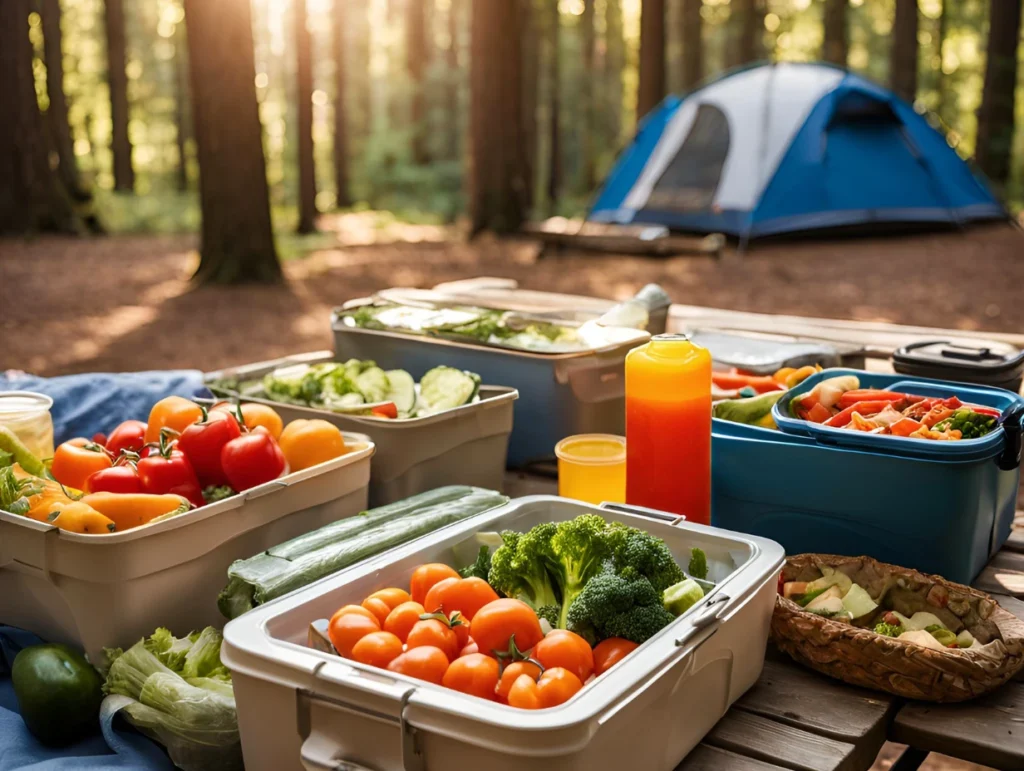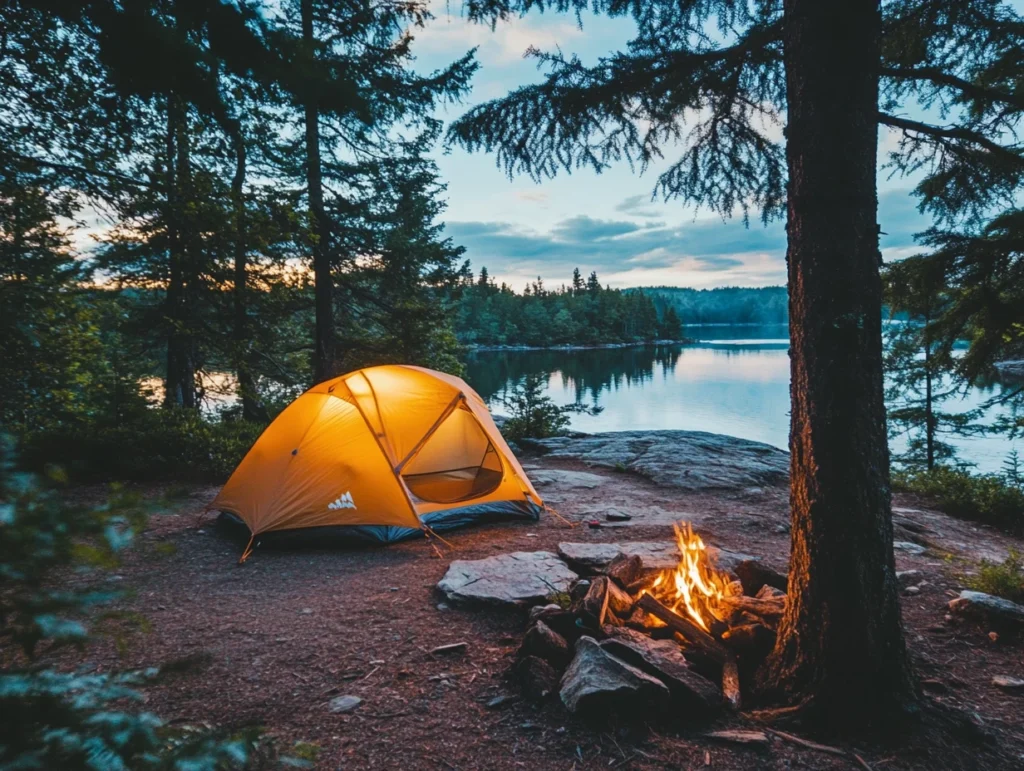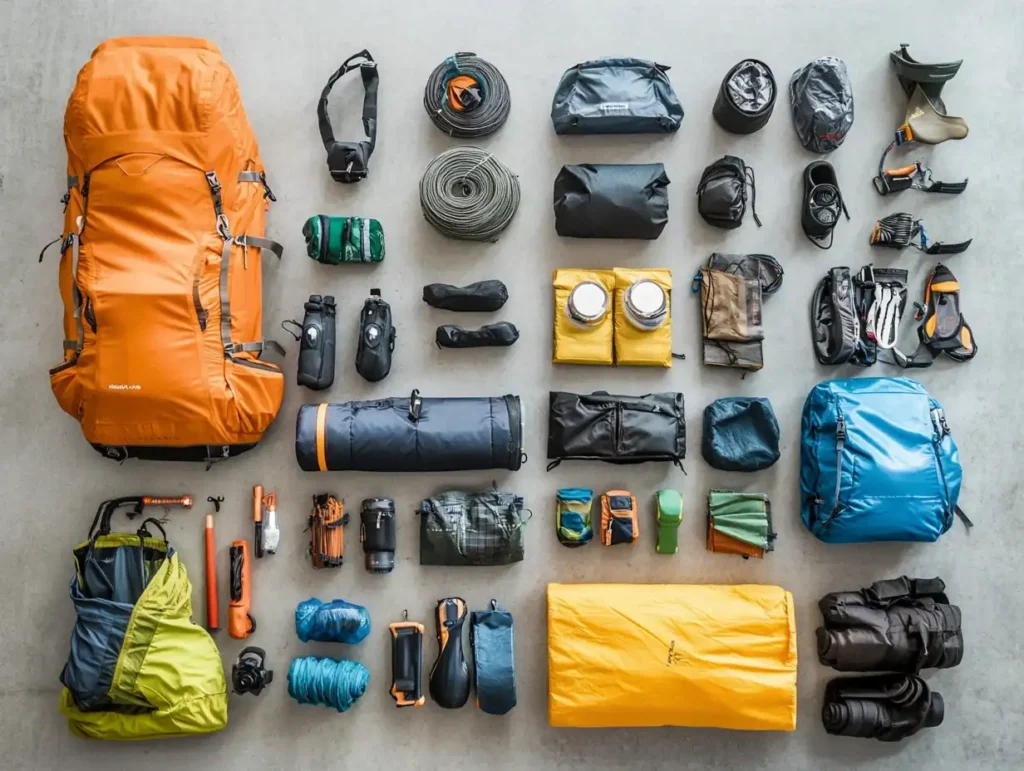Keep Your Meals Fresh and Safe
Table of Contents
Why Proper Camping Food Storage Matters
Essential Camping Food Storage Gear
Choosing the Right Cooler for Your Camping Trip
Bear-Proofing Your Campsite: Food Storage Techniques
Food Organisation and Meal Planning for Camping
Best Practices for Storing Different Types of Camping Foods
Eco-Friendly Camping Food Storage Solutions
Troubleshooting Common Camping Food Storage Issues
Hey there, fellow campers and outdoor enthusiasts! It’s Will, your friendly neighbourhood camping enthusiast, back with another essential guide.
Today, we’re diving into a topic that’s caused me more than a few headaches (and some hilarious stories) over the years: camping food storage.
Did you know that improper food storage is the number one cause of human-wildlife conflicts in campgrounds? Yep, you read that right! I learned this the hard way during a memorable cycling trip through Zimbabwe when a family of Vervet monkeys decided my poorly secured food was an all-you-can-eat buffet.
Let’s just say, porridge for three days straight isn’t my idea of gourmet camping cuisine!
But fear not! I’ve since become a bit of a food storage ninja, and I’m here to share all of my hard-earned wisdom with you. I’m still learning, but this is what I’ve learnt so far.
Whether you’re a car camping connoisseur or a backcountry backpacker, this guide will help you keep your grub fresh, safe, and away from those sneaky forest critters.
Why Proper Camping Food Storage Matters
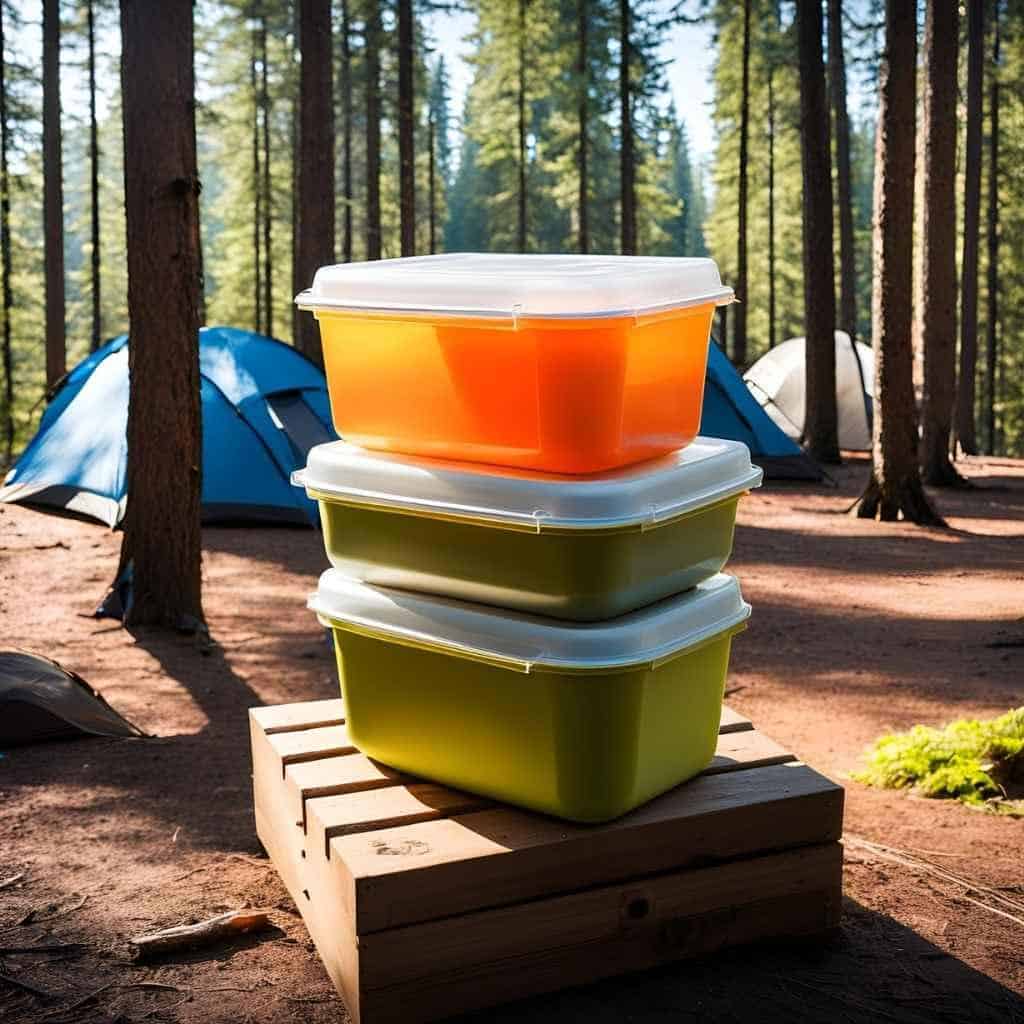
First things first, let’s talk about why we need to be food storage superheroes. It’s not just about keeping your midnight snacks safe from marauding mammals (although that’s definitely a plus). Proper food storage is crucial for:
- Protection from wildlife: Bears, badgers, reindeer, monkeys, and other creatures have an incredible sense of smell. Proper storage keeps them away from your campsite and prevents dangerous encounters.
- Preventing foodborne illnesses: Nobody wants to deal with stomach issues in the great outdoors. Trust me, it’s not fun!
- Maintaining food quality and taste: There’s nothing worse than soggy sandwiches or spoiled milk in your morning coffee.
- Reducing waste and environmental impact: Good storage means less wasted food and less trash left behind.
Essential Camping Food Storage Gear
Alright, time to gear up! Here’s your camping food storage toolkit:
- Coolers and ice packs: Your first line of defence against the heat. I swear by my YETI cooler – it’s practically bear-proof!
- Bear canisters: A must-have in bear country. They’re a bit bulky, but hey, better safe than sorry!
- Dry bags and waterproof containers: Perfect for keeping your dry goods…well, dry.
- Odour-proof bags: These babies are a game-changer for backpacking trips.
- Hanging systems: Ropes, carabiners, and stuff sacks for the classic “bear bag” method.
Choosing the Right Cooler for Your Camping Trip
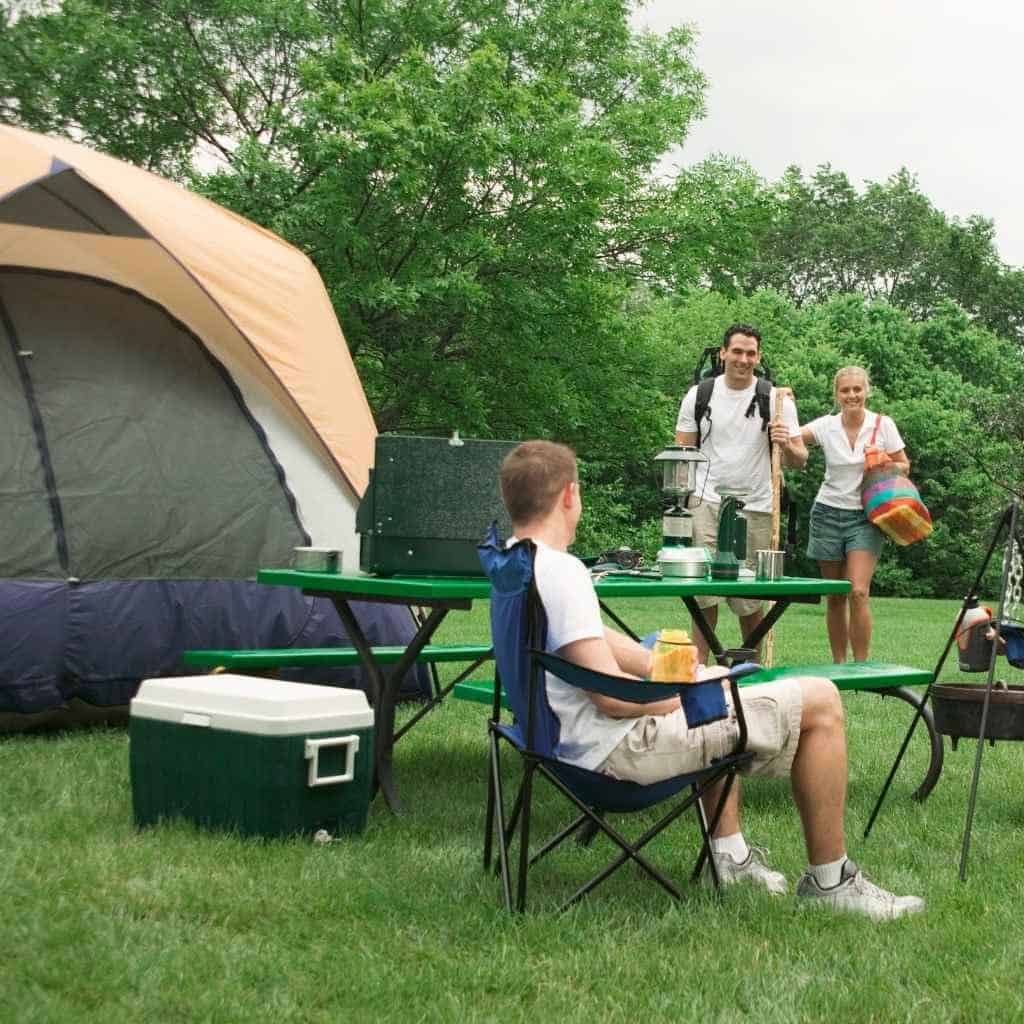
Let’s talk about coolers! They’re not just for keeping your beverages chilled (although that’s a pretty important job). When it comes to camping food storage, your cooler is your best friend. Here’s what you need to know:
Types of coolers or cool boxes:
- Hard-sided: Durable and great for car camping
- Soft-sided: Lightweight and perfect for day trips
- Electric: Fancy! Great for long trips if you have a power source
Factors to consider:
- Capacity: How much food are you bringing?
- Insulation: The better the insulation, the longer your food stays fresh
- Durability: Can it withstand curious critters and accidental drops?
Pro tip: Pre-chill your cooler before packing it. I like to throw in a bag of ice the night before a trip. It makes a world of difference!
Bear-Proofing Your Campsite: Food Storage Techniques
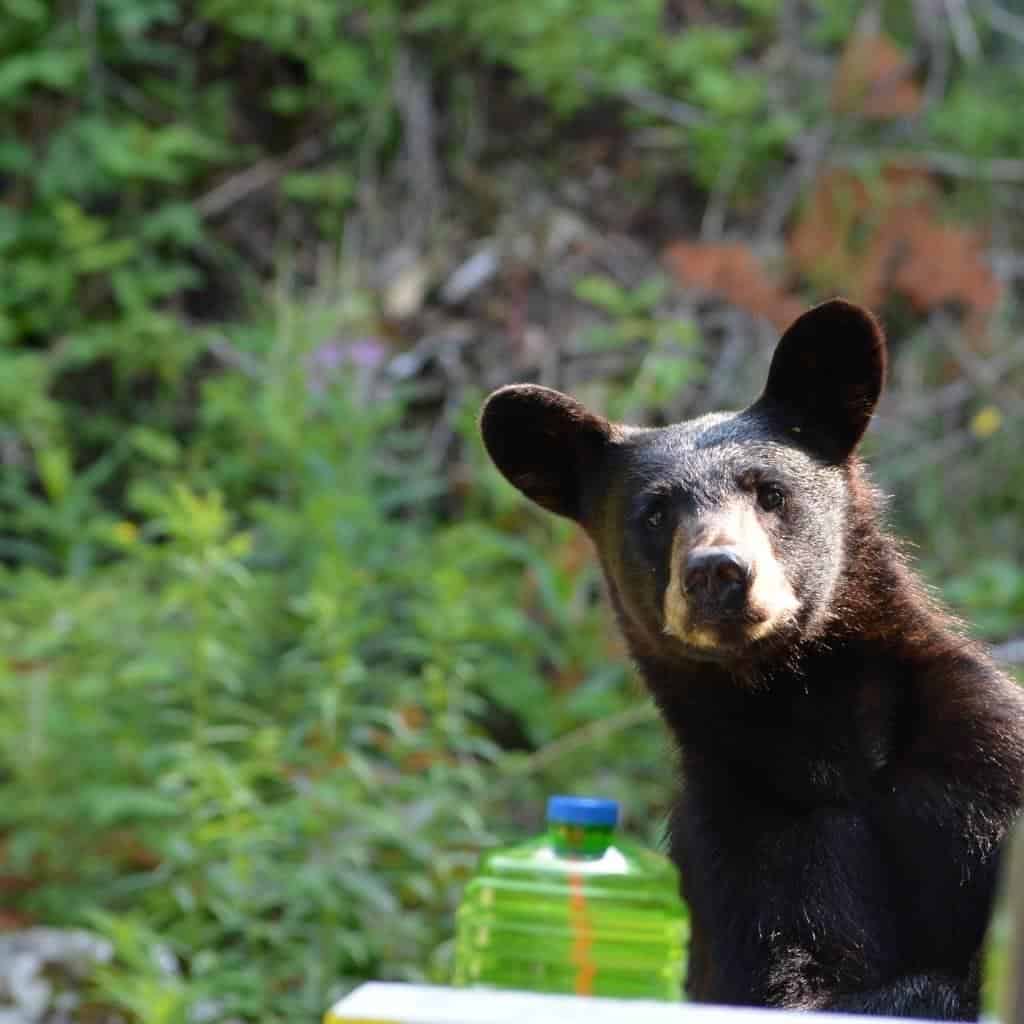
Alright, let’s talk about the big guys – bears. They’re magnificent creatures, but trust me, you don’t want them rummaging through your campsite. Here’s how to keep your food (and yourself) safe:
- Bear canisters: These hard-sided containers are resistant to bear tampering. In some areas, the law requires them.
- The PCT method: This is a fancy way of hanging your food. It involves throwing a rope over a branch, hoisting your food bag, and securing it so bears can’t reach it. It can take a while to master this method, but you can get good at it with practice!
- Bear lockers: Many campgrounds in bear country provide these. Use them if they’re available!
- The “bear-muda” triangle: Set up your sleeping area, food storage area, and cooking area in a triangle, with each point at least 100 yards apart. This keeps food smells away from where you sleep.
Remember, it’s not just about protecting your food – it’s about keeping wildlife wild and preventing dangerous encounters.
Food Organisation and Meal Planning for Camping
Okay, confession time. I used to be that camper who threw a bunch of random food into a cool box and hoped for the best. The result? Squished sandwiches, forgotten ingredients, and way too many granola bars. Learn from my mistakes!
Here’s how to stay organised:
- Plan your meals in advance. I use a camping meal planner app to keep track of everything.
- Prep what you can at home. Pre-chopped veggies are a lifesaver!
- Use clear, reusable containers to keep things organised and visible.
- Label everything. Future you will thank past you when you’re trying to find the pancake mix at 6:00am.
Best Practices for Storing Different Types of Camping Foods
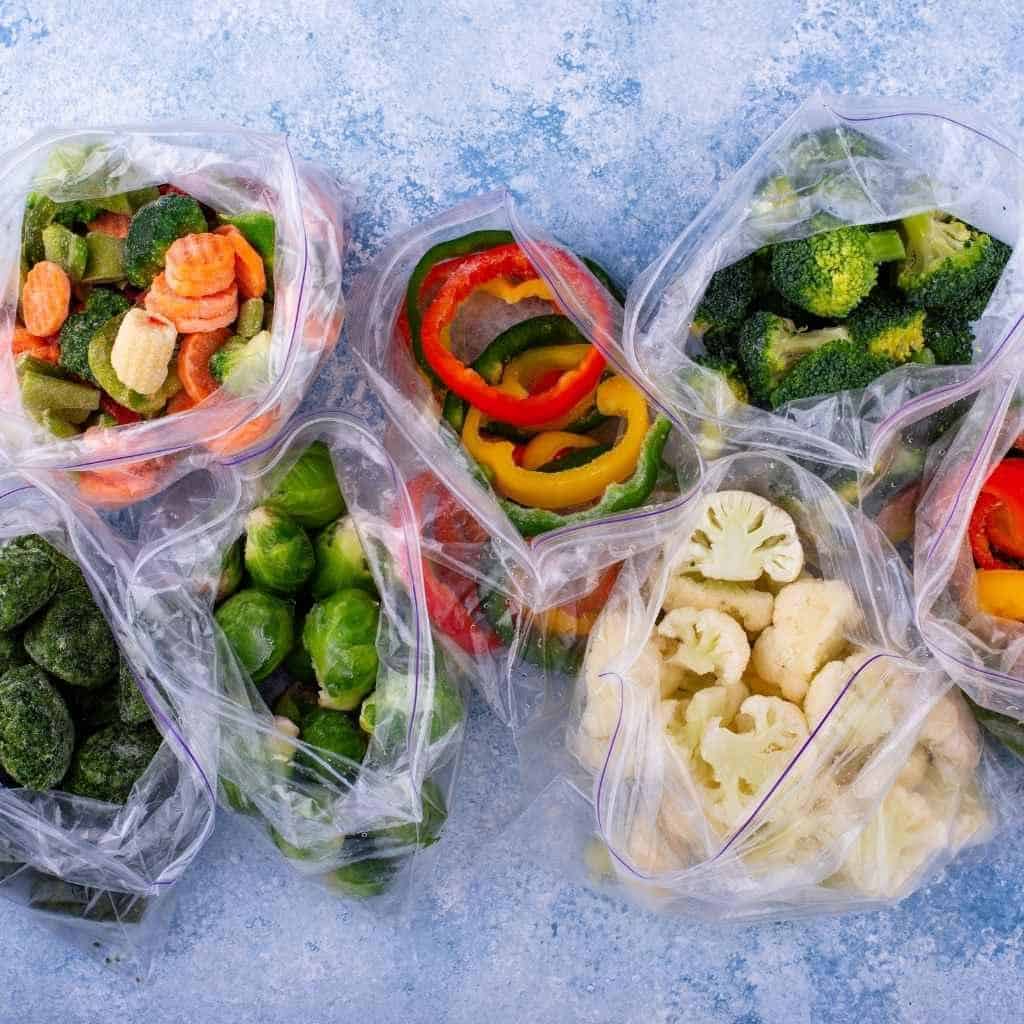
Not all camping food is created equal when it comes to storage. Here’s a quick rundown:
- Perishables (meats, dairy, fruits, veggies): Keep these in your cool box. Use ice packs or block ice for longer-lasting chill.
- Dry goods (grains, nuts, dried fruits): Store in airtight, waterproof containers or dry bags.
- Canned and packaged foods: These are pretty hardy, but keep them dry and cool if possible.
- Spices and condiments: I like to pre-portion these into small containers or even contact lens cases for backpacking trips.
Eco-Friendly Camping Food Storage Solutions
Let’s show Mother Nature some love, shall we? Here are some eco-friendly storage options:
- Reusable containers and bags: Ditch the single-use plastics!
- Beeswax wraps: Great for covering bowls or wrapping sandwiches.
- Compostable and biodegradable options: If you must use disposable items, choose eco-friendly versions.
Remember, whatever you pack in, pack it out. Let’s keep our beautiful wilderness clean!
Food Safety Tips for Camping

Nothing ruins a camping trip faster than food poisoning. Trust me, I’ve been there, and it’s not pretty. Here are some tips to keep your food (and your stomach) safe:
- Practice good hand hygiene. I always pack hand sanitiser and biodegradable soap.
- Keep cold foods cold (below 40°F/4°C) and hot foods hot (above 140°F/60°C). The in-between is the “danger zone” where bacteria thrive.
- Use separate cutting boards and utensils for raw meats to prevent cross-contamination.
- When in doubt, throw it out. Better safe than sorry!
Troubleshooting Common Camping Food Storage Issues
Even with the best plans, things can go wrong. Here’s how to handle some common issues:
- Unexpected wildlife encounters: Stay calm, make noise, and never come between an animal and food.
- Limited storage space: Get creative! Use every nook and cranny in your car or backpack.
- Extreme weather: In hot weather, store food in shade or a stream. In cold weather, insulate your food to prevent freezing.
- Forgotten or damaged gear: Always have a backup plan. A strong rubbish bag can become a makeshift dry bag in a pinch!
And there you have it! Your complete guide to camping food storage. Remember, good food storage isn’t just about keeping your snacks safe. It’s also about respecting wildlife, protecting the environment, and making sure you have a safe and fun camping experience.
Now, I want to hear from you! What are your go-to camping food storage tips? Any funny stories about wildlife encounters? Share in the comments below – let’s learn from each other’s triumphs (and mishaps)!
Until next time, happy camping and bon appétit!

